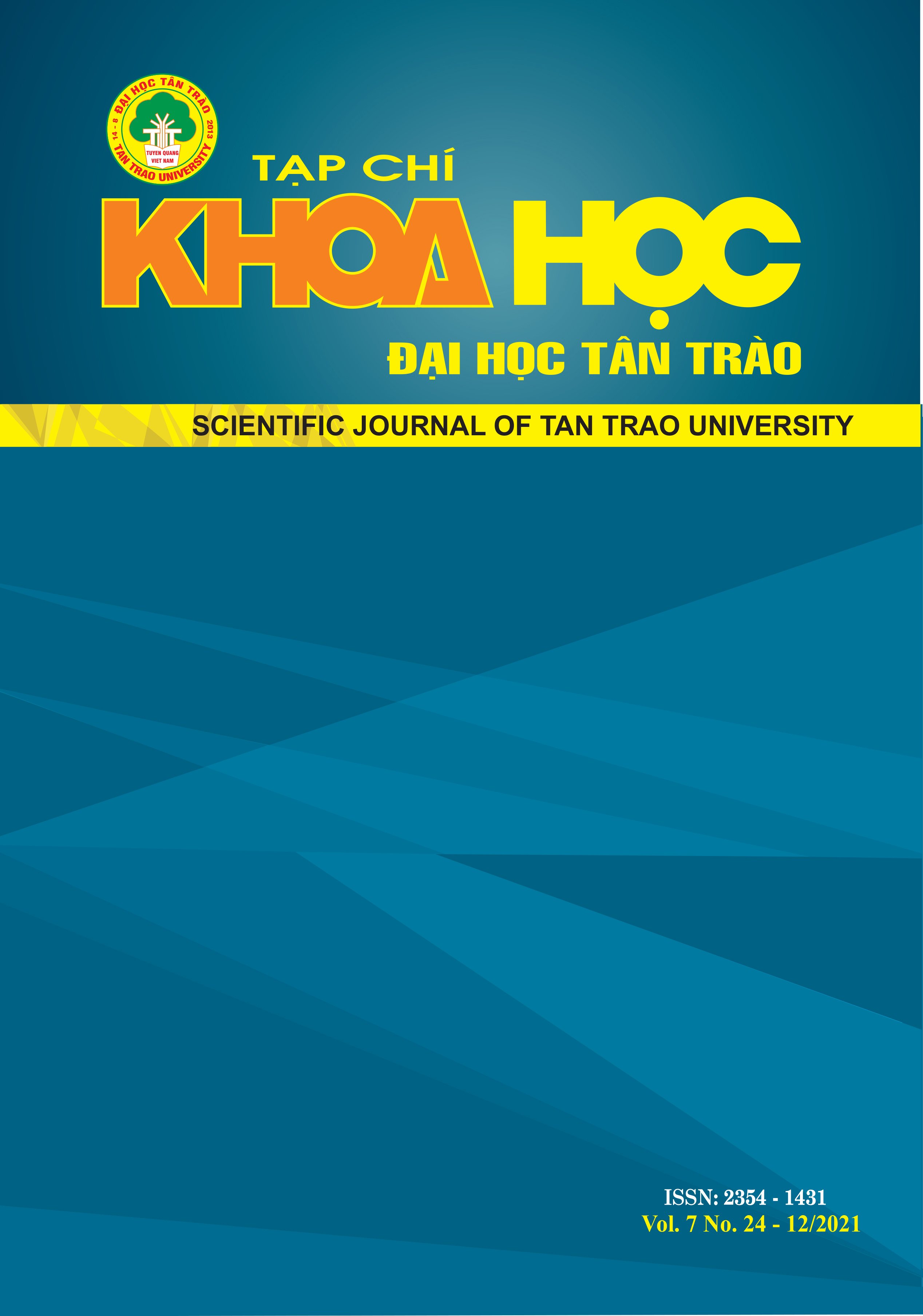STUDY ON THE EFFECT OF CHITOSAN CONCENTRATION ON QUALITY AND SELF-LIFE OF TOFU
DOI:
https://doi.org/10.51453/2354-1431/2021/647Abstract
The purpose of this study was to evaluate the effect of chitosan concentration on the quality and shelf life of tofu. Tofu is treated by soaking in a chitosan solution with a concentration of 0.75 - 1.5%. The results showed that chitosan concentration 1% give the most stable pH value during storage, pH value ranged from 5.9 to 6.28, chitosan concentration of 0.75%, 1% and 1.25 % for the least reduced protein value. Total acid increased the least in the treatment with chitosan 1% followed by 0.75%, 1.25%, 1.5% and the highest in the control treatment. The results of analysis of total microorganisms, yeasts, and molds showed no significant differences in the chitosan treatments, the control formula with the highest amount of total microorganisms, yeasts and molds. Analysis results of Coliform and E. Coli did not detect the presence of E.coli and Coliform during storage. Chitosan 1% gave the highest sensory score of 16.2 points.
Downloads
References
[1] Amiza, M.A and Kang, W. C (2013), Effect of chitosan on gelling properties, lipid oxidation, and microbial load of surimi gel made from African catfish (Clarias gariepinus). International Food research journa,l Vol 20 (4), pp. 1585 – 1594.
[2] Chang K. L. B., Lin Y. S., Chen R. H., (2003), Effect of chitosan on gel properties of tofu (soybean curd), Journal of Food Engineering, Vol . 57, pp. 315 – 319.
[3] Hou H. J., Chang K. C., (2004) Store conditions effect soubean color, chemical composition and tofu qualities, Journal of Food processing and preservation, Vol 28, pp. 473 – 488.
[4] Jayasena V., Khu W. S., Nasar-Abbas S. M. (2010) The development and sensory acceptability of lupin-based tofu. Journal of Food Quality, Vol 33, pp. 85-97.
[5] Lim B. T. and Foo M. K., (1993), “A simple preservation system for extending the shelf-life of tofu”. MARDI Res. J. Vol 21(2), pp. 151–156
[6] No H. K., and Meyers S. P., (2004), Preparation of tofu using chitosan as a coagulant for improved shelf-life, International journal of Food Science and Technology, Vol 39, pp. 133 – 141.
[7] Resmayeti P., Sungeng H. S., Ayu F. I., Syahrizal M., (2014), Application of liquit smoke and chitosan as natural preservatives for tofu and meatballs, International juornal of Applied Science and technology, Vol. 4, No 2, pp. 212 – 217.
[8] Shuhong L., Dan Z., Kejuan L., Yinngnan Y., Zhongfang L., Zhenya Z., (2013), Soy bean curd residue: composition, Utilization, and related limiting factors, SRN Industrial Engineering, Vol 41, pp. 77 – 86.
[9] Sladjana P. M., Miroljub B. B., Mirjana B. P., Mirjiana M. M., and Biljana V. V., (2010) protein consumption in tofu of corected quality, Original scientific paper, Vol 41, pp. 77 – 86.
[10] Zheng, L., Regenstein . J. M., Teng F., Li Y., (2020), Tofu productions: A review of their raw materials, processing conditions, and packaging, Food Science and Food Safety, Vol. 19, pp. 3683 – 3714.
Downloads
Published
How to Cite
Issue
Section
License

This work is licensed under a Creative Commons Attribution-ShareAlike 4.0 International License.
All articles published in SJTTU are licensed under a Creative Commons Attribution-ShareAlike 4.0 International (CC BY-SA) license. This means anyone is free to copy, transform, or redistribute articles for any lawful purpose in any medium, provided they give appropriate attribution to the original author(s) and SJTTU, link to the license, indicate if changes were made, and redistribute any derivative work under the same license.
Copyright on articles is retained by the respective author(s), without restrictions. A non-exclusive license is granted to SJTTU to publish the article and identify itself as its original publisher, along with the commercial right to include the article in a hardcopy issue for sale to libraries and individuals.
Although the conditions of the CC BY-SA license don't apply to authors (as the copyright holder of your article, you have no restrictions on your rights), by submitting to SJTTU, authors recognize the rights of readers, and must grant any third party the right to use their article to the extent provided by the license.


